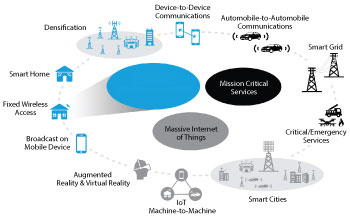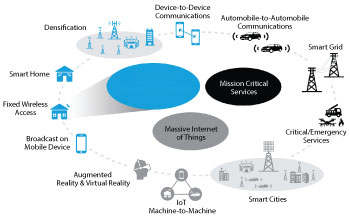Editor’s Note: At the end of December, the 3GPP approved the 5G non-standalone new radio (NSA NR) specification, which defines how enhanced broadband services can be deployed using a 5G NR leveraging the existing LTE network. This NSA architecture will first be fielded—later this year—for fixed wireless access (FWA) services using mmWave spectrum, i.e., 28 and 39 GHz.
Qorvo and Anokiwave are two companies leading the development of the mmWave front-end technology for the active phased arrays that will power these FWA services. Each company has analyzed the system requirements and defined a unique approach to meeting them. Qorvo has chosen GaN, Anokiwave silicon. We are fortunate that this issue of Microwave Journal features articles from both, each stating the case for its technology choice. Regardless of which argument you favor, no doubt you will agree that both companies are doing excellent technology and product development, a key step to making 5G viable. ______________________________________________________________________________

Figure 1 5G use cases.
The vision of next-generation 5G networks is to deliver an order-of-magnitude improvement in capacity, coverage and connectivity compared to existing 4G networks, all at substantially lower cost per bit to carriers and consumers. The many use cases and services enabled by 5G technology and networks are shown in Figure 1. In this first phase of 5G new radio (NR) standardization, the primary focus has been on defining a radio access technology (RAT) that takes advantage of new wideband frequency allocations, both sub-6 GHz and above 24 GHz, to achieve the huge peak throughputs and low latencies proposed by the International Mobile Telecommunications vision for 2020 and beyond.1
Mobile network operators are capitalizing on the improvements introduced by NR RAT, particularly in the mmWave bands, to deliver gigabit fixed wireless access (FWA) services to houses, apartments and businesses, in a fraction of the time and cost of traditional cable and fiber to the home installations. Carriers are also using FWA as the testbed toward a truly mobile broadband experience. Not surprisingly, Verizon, AT&T and other carriers are aggressively trialing FWA, with the goal of full commercialization in 2019.
In this article, we analyze the architecture, semiconductor technology and RF front-end (RFFE) design needed to deliver these new mmWave FWA services. We discuss the link budget requirements and walk through an example of suburban deployment. We address the traits and trade-offs of hybrid beamforming versus all-digital beamforming for the base transceiver station (BTS) and analyze the semiconductor technology and RFFE components that enable each. Finally, we discuss the design of a GaN-on-SiC front-end module (FEM) designed specifically for the 5G FWA market.

